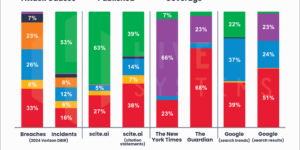Most insurance companies were setting out on a digital transformation journey with an expected time frame of about three to five years before COVID-19. Then the pandemic accelerated the need for digitization and shortened that time frame drastically—to about six months, in most cases.
Executive Summary
Insurance company leaders need to critically evaluate the function and structure of their marketing departments to determine if they're well-positioned to fully embrace modern approaches now and into the future, writes Denim Social President Gregory Bailey. In-house teams might be used for handling copy and visual, but managing CRMs, digital marketing platforms and data are now also critical elements of insurance marketing responsibilities. Here, Bailey offers five tips for carrier leaders to restructure and create marketing departments suited to pull off digital strategies.Insurance marketing teams were already using digital marketing prior to the pandemic. But as the pandemic created a world mostly void of face-to-face customer interactions, they had to ramp up digital campaigns and touchpoints significantly—and quickly. Marketers had no choice but to mold ad-hoc digital marketing strategies onto existing department structures.
One problem with charging existing teams with new strategies is that they won’t always have the expertise necessary to pull them off. In-house teams might be used to handling copy and visual, as these have been and will continue to be staples of marketing for a long time. As a result of accelerated digitization across the industry, however, managing CRMs, digital marketing platforms and data are now also critical elements of insurance marketing responsibilities.
























